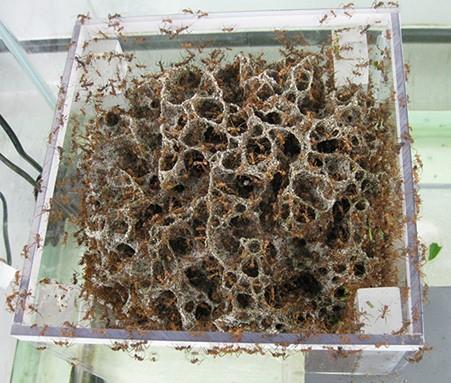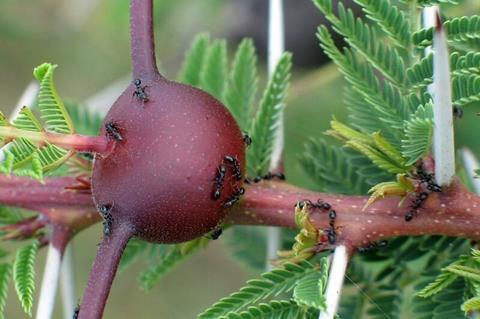The natural world provides us with many of the life-saving medicines we take for granted, including painkillers, immunosuppressants, anti-cancer drugs and antibiotics, because many of these drugs are based on or inspired by the natural products of bacteria, fungi and plants.
Antibiotics are a fundamental aspect of modern medicine; they don’t just cure infectious disease, they are also used as prophylactics during life-saving procedures, including heart transplants and chemotherapy, and much of modern medicine would not be possible without them. Microorganisms naturally make an incredibly diverse range of compounds as part of their normal growth and development, and microbial natural products account for two-thirds of clinically used antibiotics. The most famous antibiotic is penicillin, which is made by the Penicillium mould, and was the first natural product antibiotic to be purified and used to treat human disease. Penicillin (and other beta-lactam antibiotics) is still widely used in medicine, and its discovery by Alexander Fleming, and development as a drug by Howard Florey and colleagues at the University of Oxford, triggered a Golden Age of antibiotic discovery. These scientists shared the 1945 Nobel Prize for Medicine and only one other scientist would go on to win a Nobel Prize for the discovery of a natural product antibiotic. Selman Waksman won the Nobel Prize for Medicine in 1952 for discovering streptomycin and coined the word antibiotic to mean ‘a chemical substance, produced by microorganisms, which has the capacity to inhibit the growth of and even to destroy bacteria and other microorganisms’. His graduate student, Albert Schatz, who discovered that streptomycin inhibits the growth of the tuberculosis (TB) bacillus Mycobacterium tuberculosis, famously missed out on the Nobel Prize, and later successfully sued for a share of the patent royalties and recognition for co-discovery of this antibiotic. Streptomycin is still one of the first-line antibiotics used to treat people that are reinfected with TB and is made by a soil bacterium called Streptomyces griseus. As a genus, Streptomyces are particularly talented antibiotic producers. These Gram-positive, filamentous bacteria are responsible for a large proportion of the antibiotics currently used in the clinic and their ability to produce such an array of molecules makes them particularly adept at surviving in a variety of competitive environments, from soils to deserts and oceans.

The use of antibiotics in the clinic stretches back just over 100 years, to the introduction of the synthetic antibiotic Salvarsan to treat syphilis in 1909 and then the synthetic sulfa drugs in the 1920s, the latter of which had a huge impact on infectious disease. Although sulfa drugs are still in clinical use, they were largely superseded by the introduction of penicillin in 1942. Thus, humans have a relatively short history of antibiotic use and although the first antibiotics were synthetic, most are now based on the natural products of bacteria and fungi. Unfortunately, they have been widely, and in many cases carelessly, used in medicine and in agriculture such that the planet is ‘awash in a dilute solution of antibiotics’. The inevitable result is that many disease-causing bacteria have become resistant to these drugs and this antimicrobial resistance is an increasing problem that already accounts for 1.3 million deaths a year. We desperately need to develop a new generation of antibiotics and use them more wisely to slow the inevitable evolution of resistance. The golden age of discovery ground to a halt in the 1960s largely because of the rediscovery problem, that is the repeated rediscovery of known antibiotics from soil microbes. Pharmaceutical companies concluded that all the useful natural product antibiotics had been discovered and switched their efforts to making antibiotics using synthetic chemistry. With a few notable exceptions (e.g. the sulfa drugs) this has been largely unsuccessful and big pharma gave up on antimicrobial discovery, because antibiotics are not profitable. The advent of genome sequencing in the late 1990s and early 2000s, however, revealed that soil microbes encode many more natural products than they make in the laboratory, leading to renewed efforts by scientists to discover new microbes from soil and other underexplored niches, and to activate the biosynthesis of all their natural products under laboratory conditions.
So where should we look for new strains of bacteria and fungi with novel chemistry? Well, genome and metagenome sequencing tell us that even the soil is underexplored, with many molecules not made by cultured bacteria and many bacteria not even cultured from soil. However, there are also environmental niches that we either could not explore easily in the 1950s, such as deep-sea marine sediments, or that we just did not know about. The latter includes symbiotic niches in which higher organisms such as plants and invertebrates form mutually beneficial symbioses (mutualisms) with antibiotic-producing bacteria and exchange food and housing for defence against disease.
Perhaps the best studied example of a defensive symbiosis is that of tropical leafcutter ants in the genus Acromyrmex and tribe Attini, which are endemic to South and Central America and the Southern USA. As the name implies, leafcutter ants collect leaf material to carry back to their nests; however, the ants do not eat these leaves as they do not possess the digestive enzymes to break them down. Instead, they use this leaf material to farm a symbiotic fungus, Leucoagaricus, that becomes both the home and the food source for the ants as it provides fruiting bodies filled with fats and sugars that the ants can digest. The ants are entirely dependent on the Leucoagaricus, and the immature worker ants are responsible for maintaining and grooming the fungal cultivar. However, in creating the optimal environment for their fungus garden to flourish, the ants also create the perfect environment for opportunistic pathogens like fungal Escovopsis species that can infect the fungus garden and cause entire colonies to collapse. To provide additional protection for their fungal cultivar, Acromyrmex ants have developed another symbiosis with antibiotic-producing bacteria, particularly Streptomyces and the related Pseudonocardia species, that produce natural products to protect the nest from infection. This protective microbiome is maintained on the surface of the ants so that when signs of infection are identified within their nest, the ants can remove it and rub their bodies against it to coat it in the microbial natural products. Specialist glands on the ants support this dynamic microbial community and ensure diversity in both species and natural products, so that a cocktail of compounds is available to protect the fungus garden. By using this ‘multi-drug’ approach, the ants have circumvented the antimicrobial resistance problems that humans have encountered, even though they are thought to have been using antibiotics for millions of years.

We have been searching the nests of these leafcutters and other tropical fungus-growing ants for new microorganisms making new antibiotics. The most promising niche we have found is that of the African plant ant Tetraponera penzigi, which nests in the domatia of its host Acacia tree and protects these trees against large herbivores such as elephants. These ants also grow a fungus inside their domatia as food for their larvae and queen and we have cultured new species of Streptomyces and Saccharopolyspora from these domatia, suggesting they may use antibiotics to protect this fungus and themselves against disease. One of these species, which we named Streptomyces formicae (formica being Latin for ant) makes a new structural class of antibiotics called the formicamycins.
The formicamycins and their previously identified intermediates, fasamycins, are polyketide antibiotics that are decorated with differing numbers of chlorine atoms. These compounds are potent inhibitors of Gram-positive pathogens such as methicillin-resistant Staphylococcus aureus (MRSA) and vancomycin-resistant Enterococci (VRE). In addition, formicamycins display an incredibly high barrier to resistance, a feature which makes them promising candidates for clinical development. This work shows that many more new compounds remain to be identified from microbial natural products, including those that may prove more effective against drug-resistant infections than existing antibiotics. Furthermore, searching underexplored niches, including the symbiotic relationships between fungus-growing ants, fungi and bacteria is a promising route towards antibiotic discovery.







No comments yet